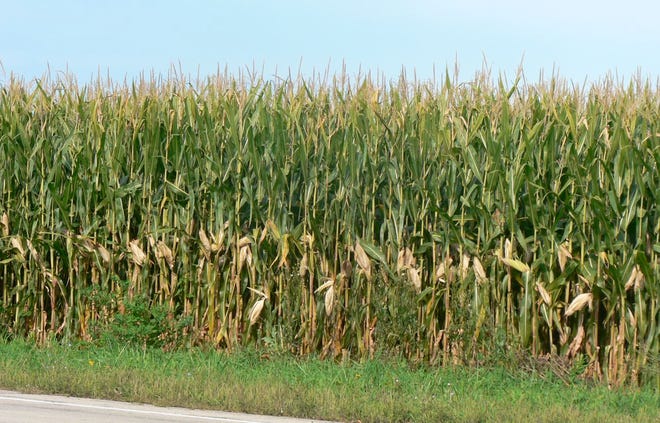Making silage and looking ahead

When I woke up his morning it was a gloomy, dreary, rainy kind of day. Just the kind of a day – when I was a youngster – that I thought would make for a nice rest day after we did morning milking and chores. Maybe to make a trip to town, go to a movie or just stay home and sit around. But, I knew what my dad would say to my brother and me: “Well it’s too wet to do anything in the field so we’ll stay inside and clean the calf pens and maybe the bull pen and chicken house."
Bad jobs
These are the kind of words us kids certainly didn’t want to hear and if you ever did any of those jobs you know why: The smell of ammonia was always near overwhelming, especially in the chicken house meaning many trips to the door to get some fresh air. But, I guess we never openly complained to dad because we knew it had to be done and someone had to do it. Now the farm bulls are mostly long gone, calves are raised differently and farm chicken houses are few and far between. The experiences, as bad as they were at the time, seem now to be fond memories and remain as just things we did while growing up.

Corn trucks and wagon are moving
The rural roads were full of big semi and tractor drawn forage wagons yesterday as I took a bit of a tour of nearby farming lands. The corn silage season is in full swing and the choppers are moving as fast as the chopped corn can be hauled away. If there is any farm work that has become really mechanized it’s that of making silage. The old days of cutting corn with a binder, loading the bundles on a wagon, unloading and feeding (a bundle at a time) into a silo filler was hard labor and took a lot of time. Now the corn is chopped, hauled and piled in bunkers, packed in bags or blown into silos without human hands touching the corn.

The car loses
Today it’s all about running big machines correctly and safely. However, I do shudder when I see cars passing a full load of corn in a semi trailer or forage box behind a tractor going slow and taking up half the road – and doing it in a no passing zone. The farm equipment usually wins – the car and passengers most always lose!
What next?
Do you wonder what agricultural life will be like after the coronavirus pandemic is over and gone? I do.
- Will all the traditional farm meetings resume their places in the normally crowded schedule? Will the sponsors have lost interest in hosting again after a year (or more maybe) layoff?
- Will the ag supply companies decide they don’t need farm sales reps anymore after the long period of farmers using the internet as their learning and ordering source?
- Will the lengthy schedule of webinars offered by anyone and everyone replace seminars at meetings, conventions and field days?
- Will the world of farming need extension agents and ag teachers when all the latest ag news and research information can be offered on the computer?

Guesstimates
My thoughts: There will be changes, but...I’m rather sure that virtual learning in some form will continue as it always has. Remember the 1940’s through about 1990 when most every community had a radio and TV station with a farm director? The local extension agents had regular weekly programs and any other time they wanted. WGN and Orion Samuelson in Chicago had a daily noon farm hour as did WBBM with Everett Mitchell in Chicago. Same thing in every other city, big or small across the country. It also seemed Purina feed and International Harvester sponsored many of the farm programs .
Where is the farm radio and TV programming and commercial sponsorship today? It’s still there (barely) but it didn’t ever replace actual farm meetings, in fact, probably help the meetings grow.

Yes, I expect some commercial companies will cut their farm sales force as their young marketing managers – already completely attuned to virtual learning – see less need for face to face contact, but they will learn that farmers will still want to kick tires, feel the paint and talk face to face with an actual human.
Ag teachers will be with us, maybe in even bigger numbers as young people will want to know even more about raising food and feeding people. As for Extension agents, I fear their peak was prior to when the UW decided production agriculture was less important than industrial development, raising gardens and chasing mosquitoes, about 40 years ago. Some will remain with more degrees but less actual farming experience and impact.
Virtual, some yes
Down the road, virtual learning and big farm meetings will meet head to head. I’ve always said, and have written, that farmers go to meetings more to talk with and learn from each other than to attend lengthy seminars. In recent years the PDPW and DBA have learned that offering short, specific subject matter sessions on the meeting floor during breaks are really well attended, effective and enjoyed.
Some of the formerly traditional farm meetings will disappear as their organizations have lost leadership and members during the pandemic and there may be new organizations that see a new need.
After the current pandemic is over I suggest there will be a desire by agricultural folks (me included) to “get out” and see people, places and things. In what form these will be who knows? And, I’m probably not the only one who detests reading and listening from a computer.
John F. Oncken is owner of Oncken Communications, He can be reached at 608-837-7406 or e-mail him at jfodairy2@gmail.com